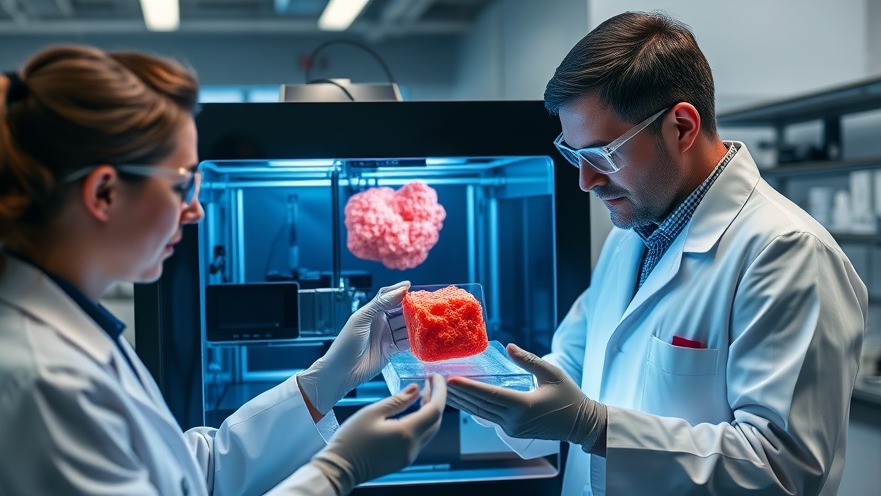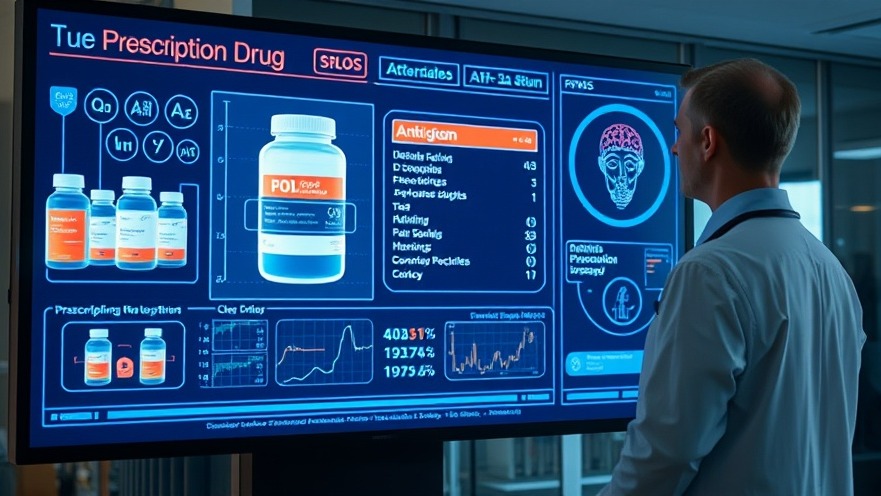
Revolutionizing Medicine: The Promise of 3D Bioprinting
3D bioprinting stands at the forefront of medical innovation, offering groundbreaking applications in creating living tissues and organs. According to a recent study by researchers at the University of Queensland, this rapidly evolving technology has the potential to change the lives of countless individuals, particularly those on waiting lists for organ transplants. With approximately 1,850 Australians currently seeking transplants, the importance of bioprinting cannot be understated. However, as promising as this technology is, legal frameworks struggle to keep pace with scientific advancements, thus raising significant implications for innovation and healthcare.
The Challenges of Patent Laws
Dr. Pratap Devarapalli, the lead researcher on the study, highlights a crucial challenge: "Patent law hasn't kept pace with what's scientifically possible." This misalignment between innovation and legislation hinders the progress of lifesaving medical tools and treatments. Patent protection is vital for encouraging investments in new technologies. Without it, companies may hesitate to fund bioprinting research, which in turn slows down development in this life-altering field.
Global Implications of Inconsistent Patent Approaches
In a survey comparing patent systems across major jurisdictions such as the US, Europe, and Australia, inconsistencies emerge in how bioprinted inventions are assessed. This lack of uniformity creates legal uncertainties that can negatively impact innovation. Some patent offices question the patentability of bioprinted tissues by raising moral objections. For example, if bioprinted tissues resemble early-stage human embryos, they might face rejections based on ethical considerations. Such complexities can discourage research and commercialization efforts, inhibiting advancements that could save lives.
Australia’s Progressive Steps in Patent Regulation
Despite these hurdles, progress is being made. Australia has recently enacted new classifications to regulate bioprinted devices containing human cells, labeling them as "medical devices with biological components." This law aims to align Australia's regulations with those in the US and Europe. While this classification introduces stricter oversight, it also establishes clearer pathways for commercialization. As Dr. Devarapalli noted, striking a balance between incentivizing funding for research and ensuring ethical considerations is essential.
Future Predictions: The Bioprinting Market on the Rise
The market for 3D bioprinting is projected to soar from an estimated $5.5 billion in 2025 to a stunning $20 billion by 2034. This growth underscores the substantial demand for innovative solutions in healthcare. As advancements continue, it is crucial for healthcare practitioners and stakeholders to stay informed about these trends, as they will directly affect patient care and treatment options.
Practical Insights for Health Practitioners
For health practitioners, understanding the implications of bioprinting technology will play an integral role in patient care moving forward. By staying aware of the regulatory landscape surrounding bioprinting, practitioners can prepare for the potential integration of bioprinted organs and tissues into mainstream therapeutics. Furthermore, they can advocate for a legal framework that supports innovation while upholding moral and ethical standards.
Conclusion: The Opportunity for Change in Healthcare
As the bioprinting landscape continues to evolve, the convergence of healthcare and technology offers tremendous opportunities for improvement in patient outcomes. By navigating the complexities of patent law and advocating for clearer regulations, healthcare professionals can influence how quickly this life-changing technology is adopted. For those passionate about advancing medical practice, now is the time to engage in discussions surrounding bioprinting and its implications for the future of medicine. As Dr. Devarapalli will present at the United Nations later this month, the conversation on bioprinting not only involves science but also crucial policy discussions that will shape healthcare for generations.
 Add Row
Add Row  Add
Add 




Write A Comment